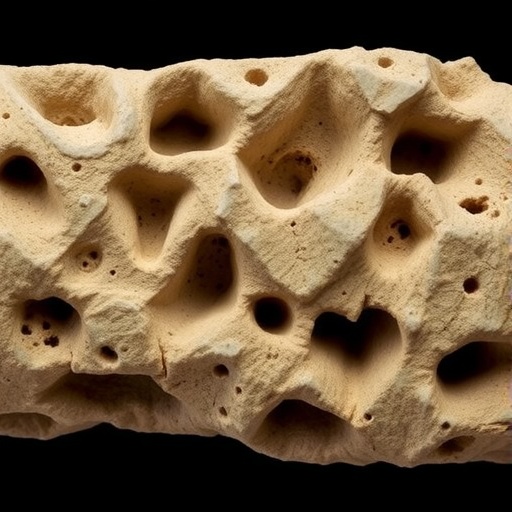In a landmark scientific breakthrough, an international consortium led by researchers at the Centre for Palaeogenetics has successfully extracted and analyzed microbial DNA from mammoth remains estimated to be over one million years old. This achievement represents one of the oldest collections of microbial genetic material ever recovered and opens unprecedented avenues for studying the symbiotic and pathogenic relationships between extinct megafauna and their microbiomes. The research, published in the prestigious journal Cell, exploits advanced genomic sequencing and bioinformatics to illuminate an unseen aspect of ancient ecosystems, fundamentally reshaping our understanding of microbial evolution alongside their host species.
The Centre for Palaeogenetics, a collaborative effort between Stockholm University and the Swedish Museum of Natural History, drew upon an extensive repository comprising 483 mammoth specimens, with 440 samples undergoing genetic sequencing for the first time. Among these materials was a remarkable steppe mammoth specimen dated to approximately 1.1 million years ago. Applying meticulous methods that differentiate between ancient host-associated microbes and modern contaminants, the researchers leveraged next-generation sequencing technologies and complex computational algorithms to tease apart the nuances embedded within this ancient DNA.
Lead author Benjamin Guinet eloquently describes the significance of their work: “Holding a million-year-old mammoth tooth and extracting microbial DNA that once existed in symbiotic association with the animal transcends previous temporal limits of ancient DNA studies. This pushes molecular paleontology into a new era where we can explore the co-evolution of microbes and their hosts far beyond anything previously achieved.” Such capabilities provide groundbreaking opportunities to investigate how microbial communities adapted, persisted, or contributed to the evolutionary trajectories of extinct species.
Crucially, the study identified six distinct microbial clades that demonstrated persistent associations with mammoth hosts across both temporal and geographic spectra. These groups include bacteria related to Actinobacillus, Pasteurella, Streptococcus, and Erysipelothrix, genera known to contain both symbiotic and pathogenic species. Notably, one Pasteurella-related bacterium closely aligns genetically with known pathogens responsible for fatal disease outbreaks in modern elephants. Since elephants are the closest extant relatives of mammoths, these results provoke provocative hypotheses about the disease ecology of prehistoric megafauna, raising questions about how microbial infections may have influenced mammoth health, population dynamics, and possibly even their extinction.
Perhaps the most extraordinary aspect of this research lies in the reconstruction of partial genomes from Erysipelothrix bacteria found in the 1.1-million-year-old steppe mammoth. This sample represents the oldest validated host-associated microbial DNA ever retrieved, pushing the boundaries of molecular preservation and analysis. The retrieval and assembly of such ancient genomes required extraordinary care to account for postmortem DNA damage, contamination controls, and the application of sophisticated phylogenetic tools to authenticate the ancient origin and biological relevance of the sequences.
Tom van der Valk, senior researcher and co-author, highlights the technical and interpretive challenges: “Microbial genomes evolve quickly and can be difficult to trace over vast time scales. Obtaining authentic DNA data spanning over a million years was akin to following an ever-changing trail. Our findings underscore that ancient remains can harbor rich biological information beyond the host genome, allowing us to piece together snapshots of ancient microbial ecosystems and their roles in adaptation, disease, and extinctions during the Pleistocene epoch.”
The research thereby expands the conceptual framework of paleogenetics by illuminating the microbiomes of extinct large mammals, providing a novel lens into prehistoric biology. While definitive conclusions on the health impacts of these microbes are constrained by DNA degradation and the paucity of direct comparative data, the persistent presence of certain microbial lineages over hundreds of thousands of years is suggestive of stable ecological relationships. This temporal longevity spans the broad geographic distribution of mammoths and includes the late survival of woolly mammoths on Wrangel Island until roughly 4,000 years ago, offering a rare glimpse into evolutionary continuity and microbial-host interactions over deep time.
Love Dalén, Professor of Evolutionary Genomics and co-investigator, emphasizes the transformative implications of the study: “Our work inaugurates a new chapter in the biological understanding of extinct species. In addition to decoding mammoth genomes, we can now begin to unravel the complex microbial communities that lived within and alongside these animals, offering profound insights into the co-evolution and ecological context of ancient life.”
Methodologically, the study exemplifies the integration of paleogenomics with cutting-edge bioinformatics, including metagenomic sequencing approaches and computational decontamination pipelines that discriminate between endogenous ancient DNAs and environmental or modern human contaminants. These techniques allowed the robust reconstruction of microbial genomes even in the face of typical challenges such as fragmentation, chemical modifications, and sparse molecule abundance.
Furthermore, this investigation sheds light on the potential co-adaptation of microbes and megafauna, possibly influencing host physiology, disease susceptibility, and evolutionary outcomes. Understanding such deep-time interactions holds relevance beyond paleontology, informing fields such as microbiome research, evolutionary medicine, and conservation biology by revealing ancient dynamics that may underpin present-day host-microbe relationships.
The find also provokes fresh questions about disease ecology in prehistoric times. Given the genetic similarity of some identified bacteria to known pathogens in modern elephants, ancient mammoths may have experienced similar infectious pressures, hinting at a complex web of microbial pathogenicity that could have shaped their survival and eventual extinction.
Finally, the team’s success illustrates the vast untapped potential of museum and fossil collections as reservoirs of ancient biological information. As sequencing technologies and analytical methods continue to advance, future studies are poised to delve deeper into the molecular fossil record, reconstructing broader aspects of life’s evolutionary history and microbial ecology across epochs.
This pioneering research not only enriches our understanding of mammoths and their microbial companions but also charts a roadmap for exploration into ancient host-microbe interactions, opening exciting frontiers in both evolutionary biology and genomics.
Subject of Research: Animals
Article Title: Ancient host-associated microbes obtained from mammoth remains
News Publication Date: 2-Sep-2025
Web References: 10.1016/j.cell.2025.08.003
Image Credits: Photo: Love Dalén
Keywords: Ancient DNA, Mammoth, Microbiome, Paleogenetics, Host-Associated Microbes, Pleistocene, Microbial Evolution, Pathogens, Steppe Mammoth, Genomic Sequencing




